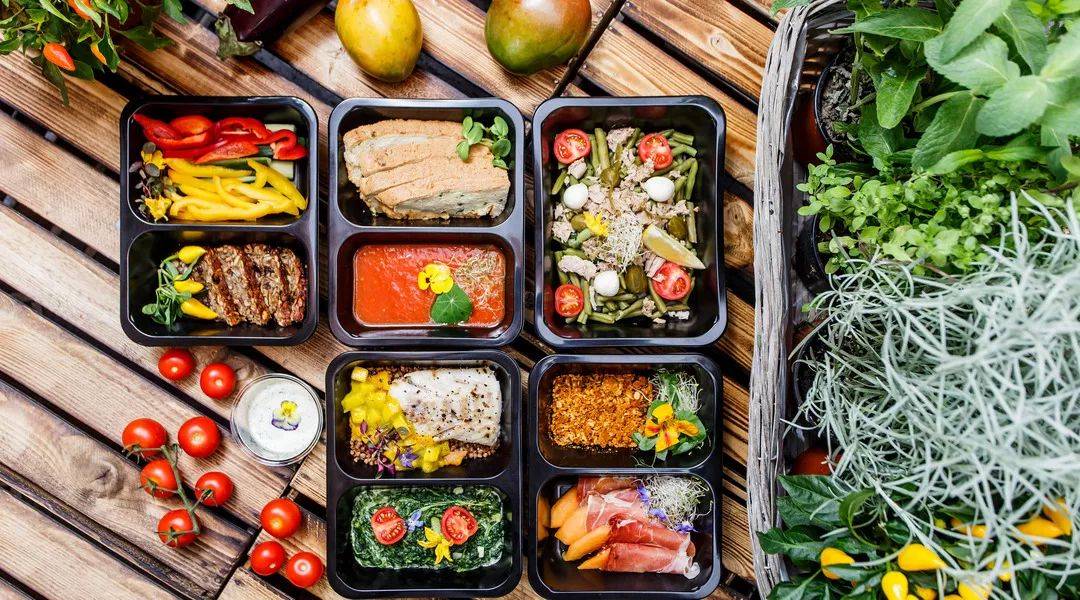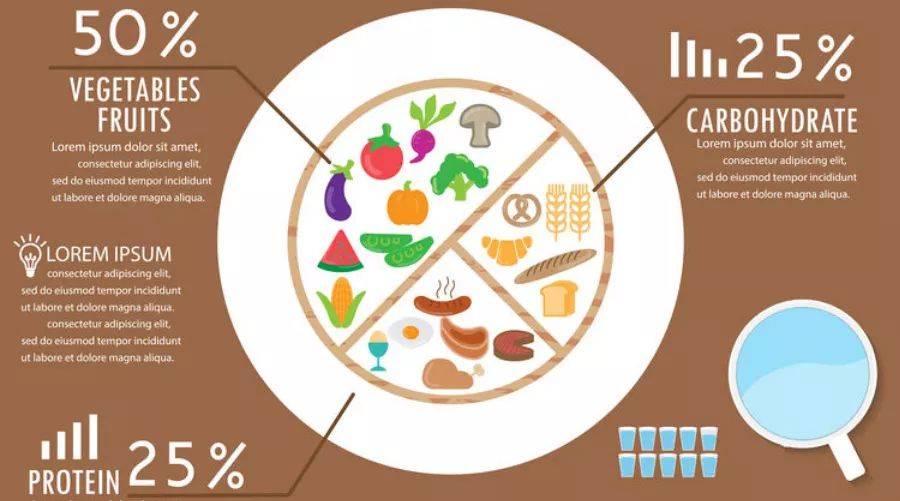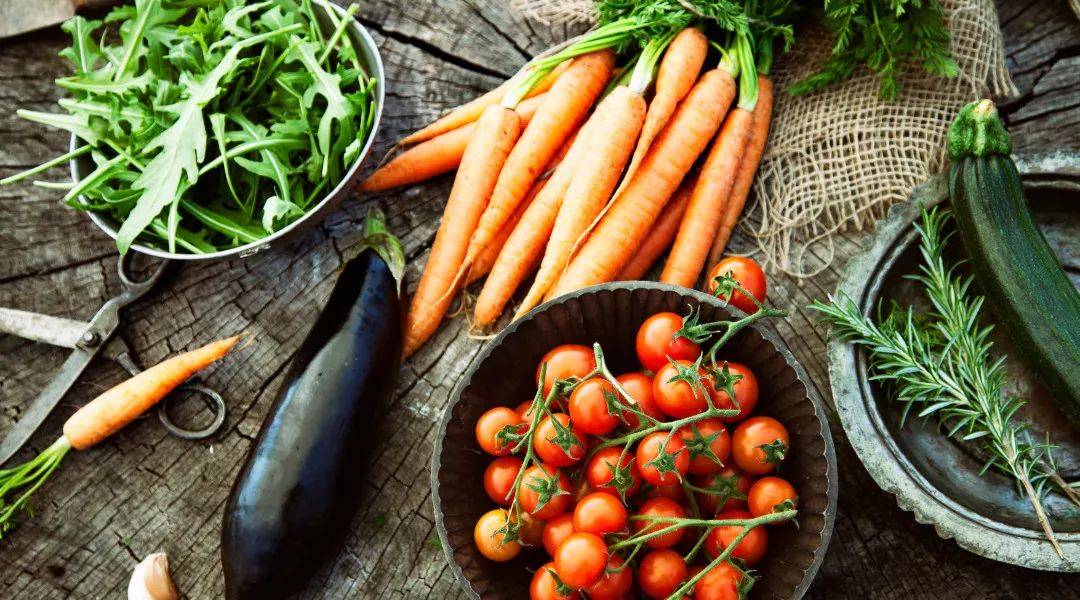
Hello everyone, I am Zhou Qian, Chief Neurosurgeon, Doctor of Neurosurgery, Master of Rehabilitation and Physiotherapy, Xiangya Second Hospital, Central South University.
He is also a visiting scholar at UCLA Reagan Hospital in the United States and Fellow, University of Helsinki Central Hospital in Finland.
If you often eat out and take out food, we will have to talk this time!
Have you ever heard of [Healthy Eating Plate]?
The U.S. Government abolished the “food pyramid” that has been in use for decades and replaced it with “my healthy eating plate”.
On the official website, the Harvard School of Public Health drew a healthy eating plate, vividly illustrating how to choose the type and proportion of food to eat in order to better maintain our health.

1. Vegetables and fruits should make up half of your plate
Pay attention to the color and variety of vegetables and fruits. Researchers specifically pointed out that potatoes are not considered vegetables on the healthy eating plate because they have negative effects on blood sugar. Similarly, fruits with high sugar content should not appear frequently on your diet.
2. Whole grains should make up 1/4 of your plate
Whole grains refer to whole wheat, barley, wheat berries, quinoa, oats, brown rice and foods made from them. For example, whole wheat pasta has a milder effect on blood sugar and insulin than refined grains such as white bread and white rice.
3. Protein food accounts for 1/4 of the plate.
Fish, chicken, beans and nuts are healthy sources of multifunctional protein. They can be mixed into salads and served with vegetables on a plate. Red meat is moderate, but processed meat such as bacon and sausage should be avoided.
One of the simplest ways is for everyone to eat 2 fist vegetables, especially dark vegetables and fungi, according to the size of their fists. One fist is the staple food with coarse cereals as the main food; One fist of high-quality protein.
In addition, a proper amount of healthy vegetable oil, such as olive oil, rapeseed, soybean oil, corn oil, sunflower oil, peanut oil, etc., is also needed, and partially hydrogenated oil containing unhealthy trans fats is avoided.
Please remember that low fat does not mean [healthy].
A healthy diet can include water, coffee or tea, but don’t drink sugary drinks. Limit milk and dairy products to one to two servings per day, and if you are used to drinking freshly squeezed juice, limit to one cup per day.
Of course, it is also important to keep exercising for weight control!
Although we know that what is a healthy diet, there are still many obstacles to prevent us from eating reasonably.
For example, the student party has no refrigerator, no pots and pans and can only eat canteens. Friends who have just worked have low incomes and a low-carbon diet costs a lot of money. The elite in the workplace, who are on the rise, have no time to cook for themselves and can only eat outside restaurants and take-out food…
Under such circumstances, what about how’s reasonable and healthy diet?
The first method: addition
When we go to a restaurant outside, we can go to the supermarket to buy a small portion of non-starch vegetables, such as lettuce, bitter chrysanthemum, cucumber, tomato and so on, which can be eaten without cooking and washing.
When eating out, you can mix them in soup and rice.
A diet rich in vegetables and fruits can reduce blood pressure, reduce the risk of heart disease and stroke, prevent certain types of cancer, reduce the risk of eye and digestive problems, and have a positive impact on blood sugar, which helps maintain appetite.
Eating non-starchy vegetables and fruits, such as apples, pears and green leafy vegetables, can even promote weight loss.
In the choice of vegetables and fruits, besides convenience, diversity and color are the key to a healthy diet. On most days, try to get at least one copy from each of the following categories:
- Dark green leafy vegetables yellow or orange fruits and vegetables red fruits and vegetables beans and peas citrus fruits
Among them, green leafy vegetables, such as lettuce, spinach, Swiss beet and mustard, are most closely related to the reduction of cardiovascular disease risk.
Tomatoes may help protect men from prostate cancer, especially invasive cancer.
Carotenoid foods can prevent lung cancer, oral cancer and throat cancer.

If conditions permit, protein can even be added to a meal.
Nuts and seeds (such as almonds, walnuts, sunflower seeds, flaxseed, sesame seeds and kiya seeds) are good vegetable proteins.
In terms of animal protein, poultry (chicken, turkey, duck) and various seafood (fish, crustaceans, mollusks) are usually better choices.
By the way, eggs are also a good choice, which can be called the gospel of the take-out party!
No matter at school or at work, it is very nice to buy a small egg boiler and take two boiled eggs when you go out every day as a protein supplement.

The second method: subtraction
Although many foods are unhealthy, it is not a big deal to eat occasionally. However, if you eat in a restaurant or order takeout every day, you should pay attention to some details.
The way food is cooked also determines whether food is healthy.
Repeated frying of hydrogenated vegetable oil will produce a lot of trans fatty acids. The food wrapped in batter and fried once is crisp and delicious, but it is not good for health.
If you eat outside food every day, you should eat less fried food or food with high sweetness, and choose cooked dishes such as cooking, which can greatly preserve the original flavor of the food and be healthy.
If the student party thinks the food in the canteen is too greasy, it can make a free soup or hot water, rinse the oil and eat it again.
To sum up!
With the right proportion of food, the right cooking method, healthy oil and beverages, you can get a healthy diet wherever you go.
Do you remember, my friends?
